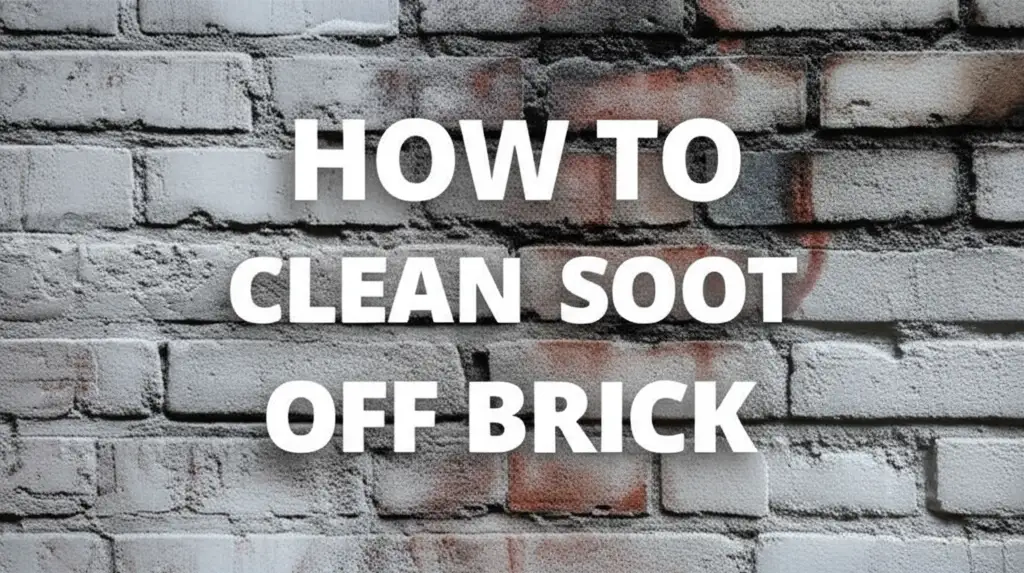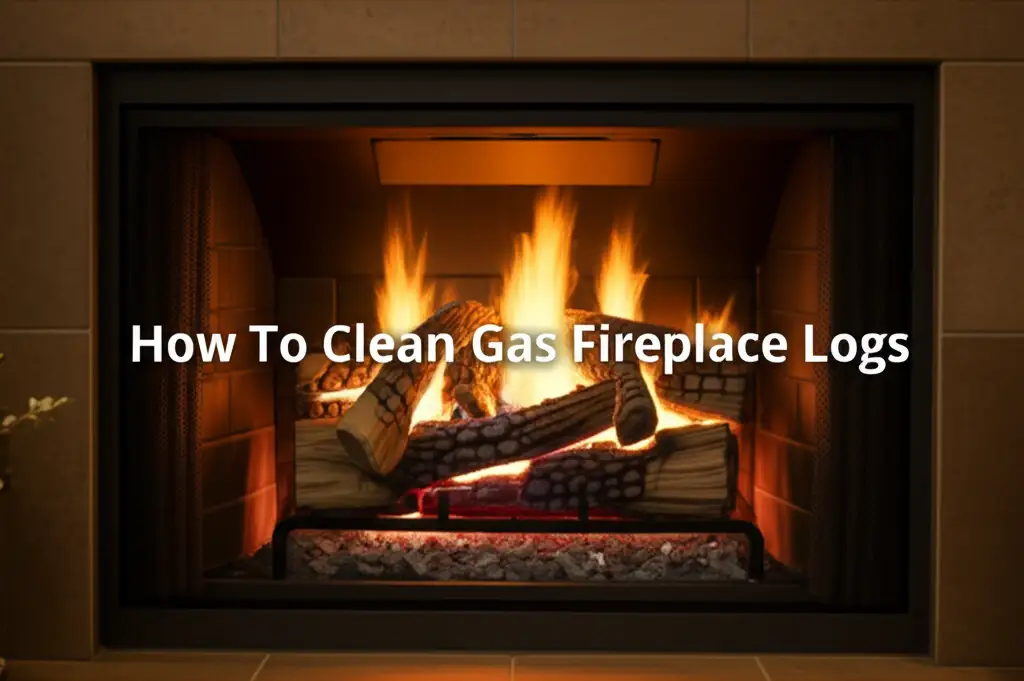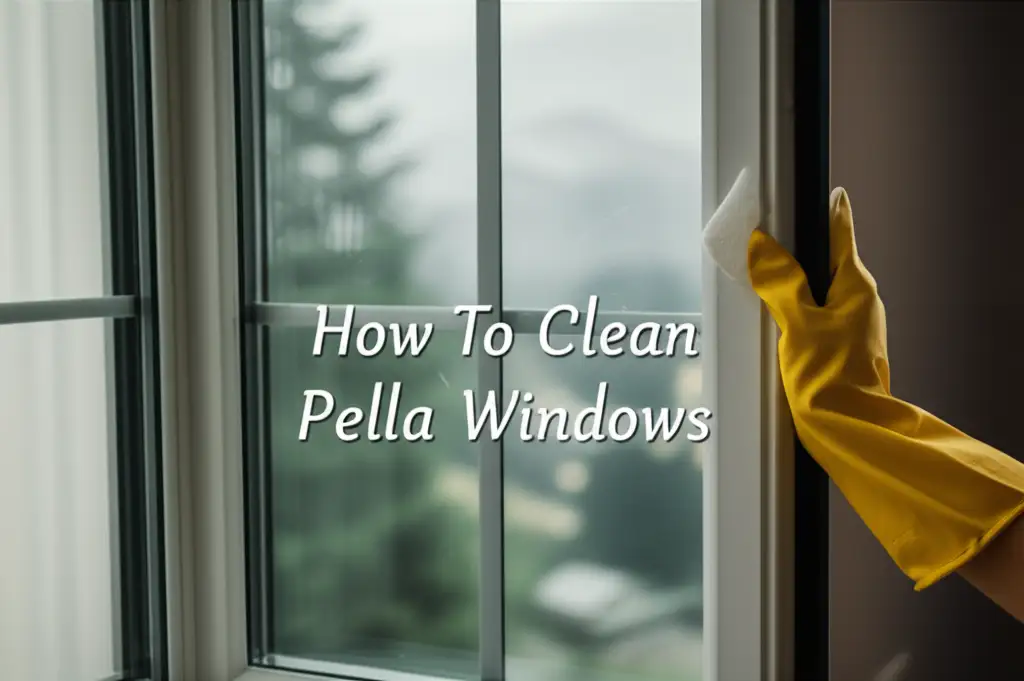· Home Maintenance · 15 min read
How To Clean Soot Off Brick

Restore Your Brick: How To Clean Soot Off Brick Easily
Soot on brick surfaces can be a real eyesore. Whether it’s from a cozy fireplace, a backyard grill, or even industrial pollution, those dark, grimy marks quickly diminish your home’s appearance. Cleaning soot off brick might seem like a tough job. The porous nature of brick tends to hold onto these stubborn stains.
But do not worry. You can bring your brick back to life. This guide will walk you through effective methods and simple steps to tackle soot stains. We will cover everything from understanding soot types to using the right tools and solutions safely. Get ready to learn how to clean soot off brick, ensuring your home looks its best.
Takeaway
- Assess the type of soot stain before you begin.
- Always wear proper safety gear to protect yourself.
- Test cleaning solutions on a small, hidden area first.
- Apply cleaners from the bottom up and rinse from the top down.
- Rinse brick thoroughly to remove all cleaning product residue.
Clear Answer to the Main Query
To clean soot off brick, first brush away loose debris. Then, apply a cleaning solution. Common options include dish soap and salt paste, a baking soda paste, or a diluted Trisodium Phosphate (TSP mixture. Scrub gently with a stiff brush. Rinse the area completely with clean water to remove all residue.
Understanding Soot on Brick: Types and Challenges
Soot on brick surfaces is more than just dirt; it is a common problem homeowners face. Soot is primarily carbon residue formed when fuel burns incompletely. This dark, powdery substance sticks stubbornly to many surfaces. For brick, its porous nature makes soot an especially challenging stain.
Soot can appear in different forms. Sometimes, it is a dry, powdery film that brushes off easily. Other times, it might be greasy or sticky. The most stubborn type of soot, particularly from wood-burning fireplaces, is creosote. Creosote is a tar-like substance that forms when smoke cools and condenses. It is highly flammable and very difficult to remove. Knowing what type of soot you are dealing with helps you pick the right cleaning method.
The rough, uneven surface of brick provides many tiny crevices for soot to settle into. This makes simple wiping ineffective. Over time, soot can also cause permanent discoloration if not addressed promptly. It can even become corrosive, damaging the brick material itself. Understanding these aspects helps you approach the cleaning task with the right strategy.
I have seen many homes where soot has built up over years. It often starts subtly, then becomes a major aesthetic issue. Addressing soot stains early can save you a lot of effort and potential repair costs down the road. This is why a proper cleaning approach is so important for keeping your brick looking clean and healthy.
Essential Safety Gear and Preparation for Soot Removal
Cleaning soot, especially from brick, requires careful preparation and safety measures. Soot particles are tiny and can irritate your lungs, skin, and eyes. Some cleaning solutions, particularly stronger ones, can also be harsh. Your safety should always be the top priority before starting any cleaning project.
Always wear personal protective equipment (PPE). This includes sturdy gloves to protect your hands from chemicals and soot. Safety goggles or glasses are vital to shield your eyes from splashes or flying debris. A dust mask or, even better, a respirator with an N95 filter, protects your lungs from inhaling soot particles. Wear old clothes that you do not mind getting dirty.
Proper preparation of the area is also critical. If cleaning an indoor fireplace, remove all furniture from the room or cover it with drop cloths. Lay down plastic sheeting or tarps on the floor around the brick to catch any drips or debris. Ensure good ventilation by opening windows and doors, or using fans. For outdoor brick, protect nearby plants or landscaping.
I always take extra time to set up my workspace. It prevents damage to surrounding areas and makes cleanup much simpler. A well-prepared space means you can focus on the cleaning task itself. Skipping these steps can lead to accidental damage or personal injury.
Gentle Methods for Light Soot Stains on Brick
For light soot stains on brick, you do not always need harsh chemicals. Sometimes, a gentle approach works wonders. These methods are ideal for fresh soot or minimal discoloration. They are safer for both you and your brick. Always start with the least aggressive method first.
Begin by dry brushing the brick. Use a stiff-bristle brush, like a nylon scrub brush, to gently brush away loose soot. Always brush in one direction, usually downwards, to avoid spreading the soot further. You can use a shop vacuum cleaner with a brush attachment to collect the dislodged soot. This step is crucial for preparing the surface for wet cleaning.
A simple solution of dish soap and warm water can often remove light soot. Mix a few drops of mild dish soap into a bucket of warm water until suds form. Apply the soapy water to the stained area with a sponge or soft cloth. Gently scrub the brick with a nylon brush, working in small sections. Rinse the area thoroughly with clean water afterward.
For slightly more stubborn but still light stains, a baking soda paste can be effective. Mix baking soda with just enough water to create a thick paste. Apply this paste directly onto the soot stains. Let it sit for about 15-20 minutes. Then, scrub the paste off with a stiff brush and rinse the brick thoroughly. These gentle methods are a great first step before moving to stronger cleaners.
Powerful Solutions for Stubborn Soot and Creosote
When gentle methods do not work, you need stronger cleaning solutions for stubborn soot and especially creosote. These substances adhere more tightly to brick. Proper application and safety remain paramount when using these powerful cleaners. Always read product labels carefully.
Trisodium Phosphate, or TSP, is a strong alkaline cleaner very effective against grease and soot. You can find TSP at most hardware stores. Mix TSP with water according to the package directions, usually about half a cup per gallon of warm water. Apply the solution to the soot-stained brick using a sponge or sprayer. Let it sit for 10-15 minutes, but do not let it dry on the surface. Scrub the brick with a stiff brush, then rinse thoroughly with clean water. Remember, TSP can be harsh, so wear full protective gear, including gloves and eye protection.
For an even more powerful approach, consider commercial brick cleaners specifically designed for soot and creosote. These products often contain specialized chemicals to break down the carbon and tar. Always choose a cleaner that is safe for brick and follow the manufacturer’s instructions precisely. Apply, scrub, and rinse as directed. These cleaners are formulated to penetrate deep into the porous brick surface. If you are dealing with very stubborn creosote inside a fireplace, you might find more specialized advice on how to handle it. You can explore methods for how to clean black soot from inside fireplace for deeper insights.
In rare and extreme cases, some people consider using muriatic acid for very tough stains. However, I strongly advise extreme caution with muriatic acid. It is a highly corrosive substance that can severely damage brick if not diluted properly and handled expertly. It also poses significant health risks. If you are even considering this powerful chemical, you must understand all the dangers and precise application steps. For details on its usage and warnings, you can refer to information on how to clean brick with muriatic acid. I rarely recommend it for DIY projects due to the high risk involved.
The Cleaning Process: Step-by-Step for Effective Soot Removal
Cleaning soot off brick successfully involves a series of logical steps. Following a methodical approach ensures maximum effectiveness and reduces the chance of spreading the stain or damaging the brick. This process applies whether you are cleaning a fireplace, an exterior wall, or a chimney. Each step builds on the last, leading to a truly clean surface.
1. Pre-Clean the Brick Surface: Before applying any wet solutions, remove as much loose soot as possible. Use a stiff-bristle brush to sweep or scrub away the dry soot. Work from top to bottom. A shop vacuum is excellent for sucking up the dislodged soot, preventing it from spreading. This initial step makes the wet cleaning much more effective.
2. Prepare Your Cleaning Solution: Mix your chosen cleaning solution according to the instructions. If using TSP, dilute it properly. If opting for a commercial cleaner, follow its specific guidelines. Always use warm water, as it helps dissolve soot and cleaning agents better. Have your buckets ready: one for the cleaning solution and one for rinse water.
3. Apply the Solution Evenly: Apply the cleaning solution to the brick. You can use a large sponge, a soft brush, or a spray bottle. Work in small sections, especially if cleaning a large area. Start from the bottom of the section and work your way up. This prevents streaks and avoids the solution running down onto dry, dirty areas, which can cause new stains.
4. Scrub the Soot Stains: Let the solution sit on the brick for the recommended time, usually 5-15 minutes. Do not let it dry. Then, use a stiff brush to scrub the stained areas. Use circular motions or scrub in the direction of the brick texture. Apply gentle but firm pressure. For stubborn spots, you might need to reapply the solution and scrub again.
5. Rinse Thoroughly: This is a crucial step. Rinse the brick completely with clean water. Start rinsing from the top of the cleaned section and work your way down. This ensures all the cleaning solution and loosened soot are washed away. You can use a garden hose with a low-pressure nozzle. For indoor brick, use clean buckets of water and sponges, changing the water frequently. Never use high pressure, as it can damage the brick and mortar. After cleaning, sometimes other stains like efflorescence (white mineral deposits) can become more visible. It is good to be aware of how to handle such issues. You can find more information on how to clean efflorescence off brick.
6. Allow the Brick to Dry: Let the brick air dry completely. Avoid re-entering the area or allowing traffic until it is dry. Inspect the area once dry for any missed spots or remaining streaks. If necessary, repeat the process on stubborn areas. If you are cleaning a brick fireplace with the intention of painting it afterward, a very thorough cleaning is important to ensure paint adhesion. You can get more specific tips for how to clean brick fireplace before painting if that is your next project.
Specialized Tools and Equipment for Brick Cleaning
Having the right tools makes cleaning soot off brick much easier and more effective. While some basic household items work, specialized equipment can significantly improve your results. Investing in a few key items will save you time and effort. This section covers the most useful tools you should consider.
First, you need good brushes. A stiff-bristle nylon brush is essential for scrubbing most soot stains. It is firm enough to agitate the soot but gentle enough not to scratch the brick. For very stubborn or caked-on soot, a wire brush might be tempting, but use it with extreme caution. Wire brushes can scratch brick and damage mortar joints. Always test a wire brush in an inconspicuous spot first, or avoid it altogether if you are unsure. Smaller brushes, like an old toothbrush, are useful for getting into grout lines and tight corners.
Buckets are fundamental for mixing solutions and holding rinse water. Have at least two: one for your cleaning solution and one for clean rinse water. Sponges, microfiber cloths, and spray bottles are also useful for applying cleaners. A spray bottle ensures even distribution of the solution on the brick surface.
For outdoor brick or larger indoor areas, a garden hose with a low-pressure nozzle is excellent for rinsing. If you have a pressure washer, use it with extreme caution. Set it to a very low pressure setting (below 1200 PSI) and use a wide-angle nozzle (25-40 degrees). Standing too close or using too high a pressure can blast away mortar and even damage the brick surface. A shop vacuum, as mentioned earlier, is invaluable for removing loose soot before wet cleaning. Its powerful suction helps contain the mess.
Lastly, for high areas, a sturdy ladder or scaffolding is necessary. Never overreach or stand on unstable objects. Safety first! These tools, combined with your cleaning solutions, form a complete kit for tackling even tough soot stains on brick.
Post-Cleaning Care and Preventing Future Soot Stains
Cleaning soot off brick is a big step, but proper post-cleaning care and prevention are just as important. These steps help maintain your brick’s clean appearance and reduce the likelihood of future soot buildup. A little foresight can save you a lot of cleaning effort later on.
Once the brick is clean and rinsed, allow it to dry completely. Good airflow helps. If cleaning an indoor fireplace, open windows or use fans. For outdoor brick, simply let nature do its job. Ensure the brick is fully dry before any further steps. If you want to protect your brick from future stains and moisture, consider applying a brick sealant. A clear, breathable sealant can create a barrier that repels water and makes future cleaning easier. This is especially useful for exterior brickwork or high-use fireplaces. Choose a sealant specifically designed for brick and follow the manufacturer’s application instructions.
Preventing soot buildup is always better than cleaning it. For fireplaces, proper burning practices are key. Always burn dry, seasoned wood. Wet or unseasoned wood creates more smoke and soot. Ensure your fireplace has good airflow. This means opening the damper fully and ensuring no obstructions. Consider using a chimney cap to help with draft and prevent rain entry. Regular chimney maintenance is also vital. A professional chimney sweep can remove creosote buildup from inside the chimney flue, which is a major source of soot. You can even learn about how to clean your chimney from bottom up for ongoing maintenance.
For exterior brick, good ventilation around the house helps dissipate pollutants that might cause soot-like deposits. Regular light cleaning, such as brushing down the brick surface, can prevent heavy buildup. By taking these proactive steps, you can keep your brick looking pristine for longer.
Frequently Asked Questions
Is bleach safe for cleaning soot off brick?
Bleach is generally not recommended for cleaning soot off brick. It can cause discoloration or damage to the brick and mortar. Bleach can also react negatively with some types of soot, creating harmful fumes. Stick to cleaners specifically designed for brick or less harsh alternatives.
Can I use a pressure washer on brick for soot?
You can use a pressure washer, but with extreme caution. Set it to a very low-pressure setting, typically below 1200 PSI. Use a wide-angle nozzle (25-40 degrees) and keep it at a safe distance. High pressure can damage the mortar joints and surface of the brick.
How often should I clean soot from my brick?
The frequency depends on the source of the soot. For fireplaces, an annual deep clean is often sufficient, along with regular light dusting. For exterior brick, clean as needed when you notice buildup. Addressing stains promptly prevents them from becoming harder to remove.
What causes excessive soot buildup on brick?
Excessive soot buildup, especially in fireplaces, often results from incomplete combustion. This happens when burning unseasoned or wet wood. Poor ventilation, a blocked chimney, or a too-small flue can also cause too much smoke and soot to form. Ensure good airflow and burn dry fuel.
Can soot permanently stain brick?
Soot can permanently stain brick, particularly if it is a heavy, greasy, or creosote-based stain left for a long time. The porous nature of brick allows the soot to penetrate deeply. Prompt cleaning improves your chances of complete removal. Very old or deep stains might require professional help.
Are natural remedies effective for brick soot?
Natural remedies like dish soap, baking soda, and vinegar can be effective for light or fresh soot stains. They are a good starting point for less severe discoloration. However, for heavy, stubborn soot or creosote, natural remedies often lack the power needed for complete removal.
Conclusion
Cleaning soot off brick may seem like a formidable challenge. However, with the right knowledge, tools, and a methodical approach, you can successfully restore your brick surfaces. We have explored everything from identifying different soot types to using powerful cleaning solutions like TSP, always emphasizing safety. Remember, starting with gentle methods and progressing to stronger ones is a smart strategy.
The process involves thorough preparation, careful application of cleaners, and meticulous rinsing. Protecting yourself and your property during the cleaning process is paramount. Furthermore, understanding how to prevent future soot buildup, especially through proper fireplace maintenance and brick sealing, will keep your brick looking its best for years to come.
Do not let stubborn soot diminish the beauty of your home. Take action and confidently tackle those soot stains. Your clean, vibrant brickwork will enhance your home’s appearance and stand as a testament to your hard work. Begin your brick cleaning project today and enjoy a fresher, cleaner space.
- brick cleaning
- soot removal
- fireplace cleaning
- exterior brick cleaning
- DIY cleaning
- home care




